01 Sep 2014
What Kind Of Addiction Therapy Do You Need?
Addiction is a complex disease that starts in the brain and affects the entire body. It includes components of mental and physical health and requires an individualized treatment plan that addresses all the patient’s needs. A complete program of treatment for addiction should include some type of therapy or counseling, but with so many options available, it can be confusing. Learn about therapy and what it means for addiction to be sure you are getting the kind of treatment you need in order to heal.
Addiction Therapy Types
Individualized Treatment For Addiction
The first and most important thing to realize when getting treatment for your addiction is that the most effective plans are individualized. Addiction is both complex and personal. Everyone is different and responds differently to treatment approaches. Make sure that the therapist, counselor or rehab facility you work with will take this into account and has a philosophy of individualizing care.
Outpatient vs. Residential Therapy
 Receiving therapy on an outpatient basis means that you can stay at home and visit your treatment center at convenient times. This option works well for people who need to continue going to work and who have a strong support network at home. If your addiction is severe and you have no one to support you in your sobriety, you might want to consider getting therapy in a residential setting. This means staying overnight for a period of a week or up to several months in a facility dedicated to addiction treatment. Both types of care will allow you to get the therapy you need, but one may be better suited to your needs than the other.
Receiving therapy on an outpatient basis means that you can stay at home and visit your treatment center at convenient times. This option works well for people who need to continue going to work and who have a strong support network at home. If your addiction is severe and you have no one to support you in your sobriety, you might want to consider getting therapy in a residential setting. This means staying overnight for a period of a week or up to several months in a facility dedicated to addiction treatment. Both types of care will allow you to get the therapy you need, but one may be better suited to your needs than the other.
Cognitive-Behavioral Therapy
The type of therapy that you are most likely to encounter while being treated for addiction is called cognitive-behavioral therapy, or CBT. A therapist practicing CBT will help you to learn what prompts your drug use or drinking. CBT helps you to recognize these motivations and teaches you how to change your substance abuse behaviors. CBT is sometimes also combined with a type of therapy called mindfulness. This means learning how to be more aware of your mood, your physical symptoms and external factors so that you can recognize triggers and avoid relapsing and using drugs or alcohol after a period of sobriety.
Group Therapy And Support
Another important component of treatment for addiction is social therapy. When you can work with other addicts, people who understand what you are going through, your treatment becomes more powerful. Group therapy sessions are common in residential rehab facilities, but you can find groups to attend on an outpatient basis. The experience of sharing your struggles in a safe environment, and learning from others, is powerful and can advance your healing. The support of these other people can lead to lifelong relationships that help you to stay sober.
Family Therapy
Addiction often starts at home; working with your family as you go through therapy can be helpful. If members of your family are willing, a therapist will work with you as a group and consider the family as a system with its own special dynamics. Being able to open up with your family and getting to the root of some of your issues is not always comfortable, but it can go a long way toward helping you get and stay sober.
Therapy is an essential component of addiction treatment and one that you should consider carefully. If you have no idea where to start, let your physician refer you to a good therapist. From there you can plan your course of treatment, decide whether you need a residential facility and begin to work toward your goal of recovery.
Ready To Begin Addiction Therapy? Call Us Now To Learn More
05 Aug 2014
Do 12-Step Programs Work?
The 12 Steps have long been a key element of addiction treatment and recovery. For decades, the majority of treatment programs have used the 12 Steps, while addicts in recovery have attended AA and other 12-Step meetings in order to maintain sobriety. These programs have come under a great deal of scrutiny with some people singing their praises and others discounting them and even calling them dangerous. If you are facing addiction and want to get or stay sober, should you consider joining a 12-Step support group? Do they actually work?
Criticism Of The 12 Steps
 There are many who criticize these kinds of programs, including AA, but also any organization that uses the 12-Step philosophy. Addiction experts don’t all agree, but those who do not like the 12-Step philosophy have several arguments. One is that it requires you to admit to being powerless in the face of your addiction. Some would say that the statement is not only false, but also counter-productive. If you are helpless and can’t exert power over your addiction, how can you possibly get better? Others claim that the statistics simply show 12-Step programs don’t work for most people. Success rates have been measured as low as 10 percent.
There are many who criticize these kinds of programs, including AA, but also any organization that uses the 12-Step philosophy. Addiction experts don’t all agree, but those who do not like the 12-Step philosophy have several arguments. One is that it requires you to admit to being powerless in the face of your addiction. Some would say that the statement is not only false, but also counter-productive. If you are helpless and can’t exert power over your addiction, how can you possibly get better? Others claim that the statistics simply show 12-Step programs don’t work for most people. Success rates have been measured as low as 10 percent.
More serious criticisms come from members who have had bad experiences. Some claim that these support groups are gathering grounds for people with violent tendencies or for predators looking for weak victims. There certainly have been terrible incidents involving addiction support groups. One reason for this is that criminal offenders are often forced to attend meetings as a part of sentencing.
How The 12 Steps Can Help
While there are critics, there are also supporters of 12-Step programs and those who praise the effectiveness of such groups. In fact, recent research has shown that recovering addicts who are deeply involved in a 12-Step group are more likely to avoid relapsing. The study compared recovering addicts leaving treatment and going into a sober living house, a 12-Step program, or simply going home. Those who went to a 12-Step group and really got involved in it were nearly three times more likely to abstain than those who did not. Participants in sober living were the most successful.
One of the most important aspects of the findings is the comparison between the different levels of participation in a 12-Step group. The researchers looked at those who met all criteria for active involvement as well as those who did not. The former were people who engaged in service work, made use of a sponsor, read group literature and called other group members for support. These people were more successful at abstaining than those who simply attended meetings, but didn’t get more involved. The study extended two years beyond treatment and found the same results throughout the two-year period.
The results of the study clearly show that a 12-Step program can help you stay sober if you take the right steps. First, you need to have already completed an addiction treatment program. Simply relying on a 12-Step group to get you sober is not enough. Once you have completed treatment, a 12-Step program can help you stay sober, but only if you get involved. Throw yourself headlong into the support, reach out to others, help others and you can reap the benefits of this decades-long philosophy of sobriety. Join half-heartedly and you may not get all the benefits. The 12-Steps can help you, but you have to do it right.
Find Out If Methadone Users Can Participate In A 12-Step Program
Contact Us Now For More Information On 12-Step Programs! Freedom From Addiction Is Possible!
American attitudes toward drugs and drug users are changing. A few decades ago Americans wanted stiff mandatory sentencing for drug users and dealers. This has led to crowded prisons, strained state budgets and little headway in terms of changing drug behavior. A recent poll revealed that two-thirds of Americans are in favor of drug treatment rather than criminal prosecution.
Jail Or Rehab?
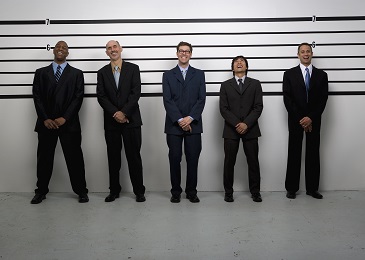 The Pew Research Center has polled the country on this subject and says that Americans would rather see offenders with no history of violence get help as opposed to jail time. Pew talked to 1,821 U.S. adults, finding that 67 percent felt the emphasis should shift toward treatment, just over 26 percent advocated for a continued focus on punishment and seven percent said they could not decide on which course was best. The poll was conducted for one week in February 2014.
The Pew Research Center has polled the country on this subject and says that Americans would rather see offenders with no history of violence get help as opposed to jail time. Pew talked to 1,821 U.S. adults, finding that 67 percent felt the emphasis should shift toward treatment, just over 26 percent advocated for a continued focus on punishment and seven percent said they could not decide on which course was best. The poll was conducted for one week in February 2014.
The two-thirds majority felt mandatory sentencing should not be applied to small scale crime, especially if it was marijuana-related. This is a significant shift in public opinion since as recently as 2001 more than half of polled Americans still supported strong penalties and prison sentencing for drug offenses, including marijuana.
The President and his administration have been lending voice to the move away from harsh mandatory sentencing. Prosecutors show less support for the idea, but so far President Obama has enjoyed Congressional support from both sides of the aisle when he suggests eliminating most mandatory sentences.
Marijuana Legalization
The poll discovered that 49 percent support the legalization of medical marijuana use, and 39 percent support legalizing recreational use. Just 16 percent maintain that marijuana should continue as an illegal substance in this country. But nearly all those polled, on both sides of the issue, expressed the belief that marijuana will eventually become a legal substance in America.
This is a notable change in public sentiment. Back in 2010 Pew reported that 41 percent supported legalization, while a majority – 52 percent – still thought the drug should be illegal. The new poll is essentially a flip of prior attitudes. At the moment medical marijuana use is legal in 20 states and recreational use is legal in two.
The prevailing attitude among Americans seems to be that a person should be free to use marijuana as long as they do it in the privacy of their own home. Even though they favor loosening the laws surrounding marijuana use, Pew reported that 63 percent did not want people to use it in public, and 44 percent did not want to have a dealer present on the street where they live.
Americans appear ready to give up on the fight against marijuana, but they still have some misgivings. Many are concerned that when marijuana is more available more young people will be likely to give it a try. And even though the country is moving away from sending drug sellers and users to prison, they still think drugs are an issue. Over 50 percent of those polled said they thought drug abuse was a “serious problem,” and just over 30 percent said drug abuse is a “crisis.”
From the White House to ordinary households, the feeling in America seems to be “let’s put small scale drug users into treatment, rather than prison.” On the one hand Americans are ready to allow fellow citizens free access to marijuana, but at the same time they worry about where that policy may lead. The majority of Americans seem to feel that fear of punishment has not been effective in reducing drug abuse and are ready to try a new approach.
Topiramate (Topamax) is a prescription medication originally developed as a treatment for certain seizure disorders. Doctors also sometimes prescribe this medication to people affected by other serious health issues, including alcohol addiction. In a study published in May 2014 in the journal Drug and Alcohol Dependence, researchers from two Dutch institutions explored the potential usefulness of topiramate as a treatment for people addicted to crack cocaine. These researchers found that only a small subset of individuals addicted to this form of cocaine clearly benefit from topiramate use.
How Does Topiramate Work?
Specific seizure disorders treated with topiramate include Lennox-Gastaut syndrome and certain forms of epilepsy. The medication helps people affected by these conditions by easing excessive nerve activity inside the brain. This same effect on brain function can also help stop migraine headaches from occurring.
When given to people affected by alcoholism, topiramate can diminish the severity of some of the symptoms associated with alcohol withdrawal, and can thereby help reduce the likelihood that a recovering alcoholic will lapse back into active drinking. Doctors may also prescribe the medication to people affected by medically serious forms of obesity. Available forms of topiramate include tablets and specially designed granules that users can release from a capsule and mix with food.
Topiramate And Cocaine Addiction
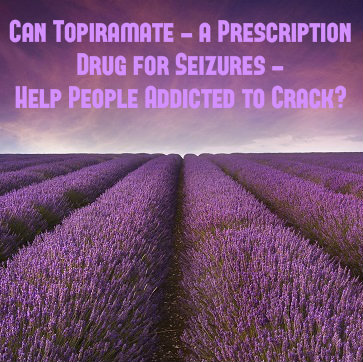 There is no medication in doctors’ treatment arsenals approved to help people affected by cocaine addiction. Instead, successful treatment typically depends on a form of behavior modification therapy called cognitive behavioral therapy or on other non-medication-based therapeutic options. Addiction researchers are actively looking for new medications that could help people addicted to cocaine, as well as existing medications that could be adapted for use in cocaine addiction treatment.
There is no medication in doctors’ treatment arsenals approved to help people affected by cocaine addiction. Instead, successful treatment typically depends on a form of behavior modification therapy called cognitive behavioral therapy or on other non-medication-based therapeutic options. Addiction researchers are actively looking for new medications that could help people addicted to cocaine, as well as existing medications that could be adapted for use in cocaine addiction treatment.
In a study published in October 2013 in the American Medical Association journal JAMA Psychiatry, a multi-university research team studied the effects of topiramate on 71 adults impacted by cocaine addiction. These researchers concluded that, compared to recovering addicts who don’t receive the medication while undergoing cognitive behavioral therapy, those who receive both topiramate and cognitive behavioral therapy experience improvements that include longer periods of cocaine abstinence (verified by an increased number of cocaine-free urine drug tests) and a reduced craving for further cocaine intake.
Potential Usefulness Of Topiramate In Crack Cocaine Treatment
Crack cocaine is powdered cocaine that has undergone an additional step of chemical processing. While the two forms of the drug have the same basic brain effects, crack only produces these effects for a relatively brief amount of time. This means that users of this form of cocaine may take the drug more frequently, and therefore may have greater odds of eventually experiencing the long-term brain changes associated with cocaine addiction.
In the study published in Drug and Alcohol Dependence, researchers from Parnassia Addiction Research Centre and the University of Amsterdam specifically investigated the potential usefulness of topiramate treatment in people addicted to crack cocaine. Thirty-seven participants in the study received a 12-week combination of topiramate and cognitive behavioral therapy, while another thirty-seven participants only received cognitive behavioral therapy.
The researchers mainly measured the effectiveness of topiramate treatment by comparing the rate of continued program involvement among recipients of the medication to the rate of continued involvement among those who did not receive the medication.
Variance Factors In Topiramate Use
In addition, they assessed such things as the regularity with which participants took their prescribed topiramate, the presence of negative side effects in the topiramate users, the ability to avoid using cocaine or other substances, the ability of medication users to interact in socially appropriate ways and the level of satisfaction that the topiramate recipients expressed toward use of the medication.
After completing their assessments, the researchers found that topiramate didn’t produce any serious side effects in the study participants. However, they also found that most of the medication recipients did not take it on a regular basis. In addition, they concluded that use of topiramate neither increased the length of involvement in cocaine addiction treatment nor generally contributed to a reduction in the consumption of cocaine or any other substance.
Critically, one group affected by crack cocaine addiction did benefit from topiramate use: those individuals simultaneously impacted by an addiction to opioid drugs or medications. This subset of addicts significantly lowered their cocaine intake while taking topiramate.
Importance Of Consistency Of Topiramate Use
The authors of the study published in Drug and Alcohol Dependence link the low level of topiramate effectiveness in crack cocaine addicts to highly inconsistent intake of the medication. Because many people in treatment don’t maintain their medication routines, the authors believe that topiramate may only play a relatively minor role in addressing the effects of crack cocaine addiction.
If you or a loved one is struggling with cocaine or any other addiction, call us now! We are here to help you!
Read More About The Addiction Treatment Uses For Topiramate
12 May 2014
Is Addiction Coverage Really Equal?
In recent years, two federal laws have guaranteed fair and equal coverage for mental health and addiction treatment. Those working in the field of addiction care are not so sure that the intent of those laws is really playing out in reality. People struggling with substance use disorders may not be getting the insurance coverage they need in order to get well.
The Federal Laws
In 2008, President Bush signed the Mental Health Parity and Addiction Equity Act. The law is supposed to ensure that health insurance plans are no more restrictive when it comes to mental health or addiction care than they are with other types of medical care. In other words, deductibles, co-pays and limits on treatment cannot be greater for mental health or addiction than anything else in the plan. The law does not require that plans cover these types of care at all.
President Obama’s Affordable Care Act added to the previous law by listing mental health and addiction treatment as essential benefits that must be covered by all health insurance plans, including those offered by small businesses and those for individuals. Prior to this law, most large company group plans included such coverage, but smaller plans often did not.
Equal Coverage Not So Equal
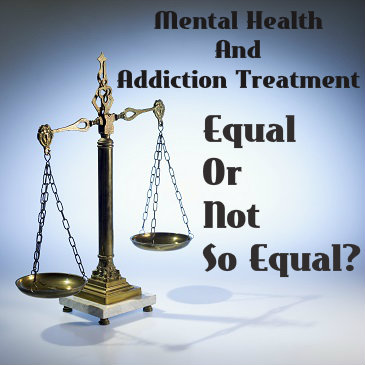 The two laws signed by Presidents Bush and Obama were intended to make sure that people needing care for mental health issues or for addiction would get the treatment they need. One of the biggest barriers to getting treatment has always been cost. If an insurance plan does not cover treatment, or if the restrictions on treatment are significant, someone who needs help may not get it. Those who are in the field of treatment for addiction are finding that the laws’ intentions are not always playing out as intended.
The two laws signed by Presidents Bush and Obama were intended to make sure that people needing care for mental health issues or for addiction would get the treatment they need. One of the biggest barriers to getting treatment has always been cost. If an insurance plan does not cover treatment, or if the restrictions on treatment are significant, someone who needs help may not get it. Those who are in the field of treatment for addiction are finding that the laws’ intentions are not always playing out as intended.
The National Association of Addiction Treatment Professionals conducts ongoing surveys and has reported that there are many denials of coverage for addiction care. Behind more than half of those denials is a debate over what is medically necessary. Unlike other medical conditions, like heart disease for instance, medical necessity for addiction is not always perfectly clear. The insurance plans need not cover care that is not deemed medically needed. Caregivers cite the changing laws as the reason insurers are getting tougher about what they will and will not cover.
One of the biggest battles over care for addicts is the number of days of coverage for residential stays. Many insurers want to cap the stay at a week or less, while addiction experts insist that patients need up to three months of treatment. Some insurers insist that treatment need not be inpatient care and that they will cover a few months of outpatient care. What is right for each patient, though, is highly individualized. Some may succeed with outpatient treatment, while others have nowhere safe to go and really need a long stay in a residential facility.
The changing laws regarding care for addiction and mental health represent an important societal shift in attitudes toward those struggling with these very real medical conditions. The shift is positive and the laws help, but there are still many bugs to work out. As insurers debate how to implement coverage that meets the requirements of the laws, addiction caregivers try to pick up the slack. It may take more time to ensure that everyone gets the help they need, but the changes so far are just not enough to reach everyone.
There are currently no fully proven medication-based options available to help people addicted to cocaine recover in treatment programs. Researchers and doctors have devoted a considerable amount of time to addressing this lack by either searching for new options or adapting existing medications to treat cocaine addiction. In a study published in April 2014 in The Journal of Neuroscience, researchers from three U.S. institutions explored the potential role of a medication called baclofen (usually prescribed to ease certain forms of severe muscle spasming) in helping recovering cocaine addicts avoid experiencing a drug relapse.
Can Medication Help Cocaine Addiction?
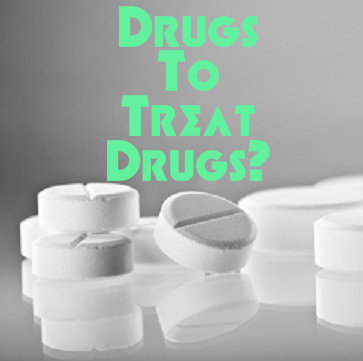 Researchers across the U.S. are investigating the potential usefulness of a number of existing medications as treatments for people affected by cocaine addiction. Medications currently being studied directly in human beings include disulfiram (Antabuse), normally used in alcoholism treatment; modafinil (Provigil), typically used in the treatment of sleep apnea or narcolepsy; and topiramate (Topamax), normally used to control seizure activity and previously adapted for alcoholism treatment. The National Institute on Drug Abuse (NIDA) reports that the most consistent positive results have come from disulfiram. In addition to these adapted medications, some researchers are exploring the possibility of developing a cocaine vaccine that could prevent the drug from producing its characteristic mind-altering effects.
Researchers across the U.S. are investigating the potential usefulness of a number of existing medications as treatments for people affected by cocaine addiction. Medications currently being studied directly in human beings include disulfiram (Antabuse), normally used in alcoholism treatment; modafinil (Provigil), typically used in the treatment of sleep apnea or narcolepsy; and topiramate (Topamax), normally used to control seizure activity and previously adapted for alcoholism treatment. The National Institute on Drug Abuse (NIDA) reports that the most consistent positive results have come from disulfiram. In addition to these adapted medications, some researchers are exploring the possibility of developing a cocaine vaccine that could prevent the drug from producing its characteristic mind-altering effects.
In the absence of proven medications, most cocaine treatment programs rely on behavioral therapies that achieve their beneficial effects by helping recovering addicts change the ways in which they think and react in the presence of internal and external cues associated with drug use. Common options here include cognitive behavioral therapy (CBT) and contingency management. In CBT, people recovering from cocaine addiction learn to identify the thoughts and emotions that support drug use, then go on to learn how to replace those thoughts and emotions with alternatives that don’t support the urge to use cocaine. Contingency management promotes basic program compliance and goal setting by financially or materially rewarding recovering addicts for following program rules and reaching important treatment milestones.
What Is Baclofen?
Baclofen is a chemical relative of a substance that occurs naturally inside the brain. In the treatment of severe muscle spasms, it produces its beneficial effects by slowing down the rate of nerve cell activity in the spinal cord (which, along with the brain, forms the central nervous system). Specific ailments improved by this slowdown include multiple sclerosis and certain spinal cord problems that trigger contractions in the body’s skeletal muscles. Baclofen is widely available as a generic, unbranded medication and comes in tablet form.
Usefulness In Preventing Relapses
Current scientific evidence indicates that, even after extended periods of drug-free living, a recovering cocaine addict can experience chemical reactions in the brain that trigger drug cravings in the presence of internal or external cues previously associated with drug intake. In the face of these cravings, many people in recovery relapse back into drug use. In the study published in The Journal of Neuroscience, researchers from the University of Pennsylvania, Wake Forest University and the Veterans Administration explored the usefulness of baclofen in preventing the chemical changes in the brain that support cravings and relapse. During the study, 23 men addicted to cocaine received either doses of baclofen or a placebo designed to mimic the medication’s appearance. These men ranged in age from 18 to 55.
One week into the study, the researchers used modern scanning technology to examine the participants’ real-time changes in brain function while they viewed cocaine-related imagery at a pace too rapid to register in conscious awareness. Effectively, these rapidly presented images recreated the types of subliminal drug cues that can trigger drug intake in both active users and recovering addicts. When they compared the brain reactions of the baclofen users to the reactions of other study participants, researchers found that the baclofen users showed a substantially lower level of activity in the brain areas responsible for triggering pleasurable sensations and increasing motivation. Normally, increased activity in these areas helps drive the urge to use more drugs.
Based on their findings, the authors of the study published in The Journal of Neuroscience believe that baclofen can help block the subliminal drug-using cues that support the onset of relapse in people recovering from cocaine addiction. However, their work did not include clinical testing of the medication’s ability to prevent drug cravings and relapse in real-world conditions. They point toward a need for further research to investigate baclofen’s effectiveness in such conditions.
Find Out How Alcoholics Respond To Baclofen
Significant numbers of the people who commit crimes in America are affected by clinically diagnosable symptoms of substance abuse or substance addiction. Current evidence indicates that successful treatment of these individuals’ substance-related issues substantially reduces the chances that they will commit additional crimes in the future. According to results reported by the National Institute on Drug Abuse, successful treatment of criminal offenders with substance-related issues also carries a lower financial burden for society than the reincarceration of those individuals who continue their involvement in illegal activity.
Drug Abuse And Jail Time
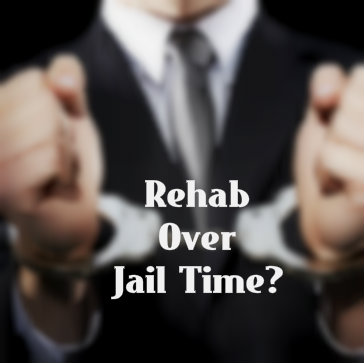 The close connection between substance problems and the chances of ending up in jail or prison is well documented. For example, figures compiled by the National Institute on Drug Abuse indicate that roughly 50 percent to 66 percent of the people incarcerated in a state jail or prison, or in a federal facility, have symptoms that could qualify them for an official diagnosis of alcohol use disorder (alcohol abuse or alcoholism). In addition, figures compiled for the year 2012 by the Substance Abuse and Mental Health Services Administration indicate that just over 25 percent of U.S. adults recently paroled from prison or under supervised prison release currently abuse either marijuana or some sort of prescription medication. Furthermore, well over a quarter (30.2 percent) of all U.S. adults who receive probation for criminal activity abuse marijuana or a prescription medication.
The close connection between substance problems and the chances of ending up in jail or prison is well documented. For example, figures compiled by the National Institute on Drug Abuse indicate that roughly 50 percent to 66 percent of the people incarcerated in a state jail or prison, or in a federal facility, have symptoms that could qualify them for an official diagnosis of alcohol use disorder (alcohol abuse or alcoholism). In addition, figures compiled for the year 2012 by the Substance Abuse and Mental Health Services Administration indicate that just over 25 percent of U.S. adults recently paroled from prison or under supervised prison release currently abuse either marijuana or some sort of prescription medication. Furthermore, well over a quarter (30.2 percent) of all U.S. adults who receive probation for criminal activity abuse marijuana or a prescription medication.
Medical Benefits Of Addiction Treatment
More than four out of five people in jail or prison with diagnosable substance problems don’t receive treatment for those problems while incarcerated. This means that the vast majority of affected individuals finish their sentences with their abuse or addiction issues intact. Statistically speaking, these individuals have an unusually high chance of committing more crimes, whether in direct support of their substance use or for other purposes. Current evidence strongly supports the usefulness of substance treatment for incarcerated men and women. Specific treatment approaches that produce positive results include both the use of substance-specific medications and the use of substance-specific counseling or behavioral therapy. Treatment settings that produce positive results include long-term residential communities called therapeutic communities (which work both inside and outside of a daily prison environment), the use of specialized courts that mandate both treatment participation and consequences for criminal activity, and the use of a specific form of case management called TASC (Treatment Accountability for Safer Communities).
Is Drug Treatment Cost-Effective?
The 2014 report from the National Institute on Drug Abuse details the results of a 2013 study published in the American Journal of Public Health by researchers from the University of California, Los Angeles. These researchers analyzed the financial impact of a California law, called the Substance Abuse and Crime Prevention Act of 2000, which mandated that people with little or no history of involvement with the criminal justice system receive parole for certain drug-related activities if they agreed to attend a suitable form of substance treatment.
The researchers gathered financial data from 42,000 active cases between the middle of 2001 and the middle of 2002 and compared that information with financial data from 47,000 active cases between the middle of 1997 and the middle of 1998. All of the people in the first group qualified for treatment under the Substance Abuse and Crime Prevention Act; all of the people in the second group would have qualified for treatment under that law had it existed at the time. After calculating all of the costs involved, the researchers concluded that treatment of offenders dealing with serious substance-related issues saved California an average of $2,300 per person. This equated to a total savings of roughly $100 million in a single year. Most of the savings came from reduced costs to the California prison system stemming from the need to house fewer individuals.
Despite the savings produced by treating first- and second-time offenders affected by substance issues, California stopped providing funding for enforcement of the Substance Abuse and Crime Prevention Act after 10 years. The authors of the study published in the American Journal of Public Health note that financial costs for dealing with the community-wide effects of substance-using criminal offenders are steadily trending upward. They also note the usefulness of programs such as the one employed in California throughout the first decade of the 2000s. This usefulness includes both economic savings and the achievement of substance treatment results for criminal offenders that match up well with the results gained by people not involved with the criminal justice system.
Buprenorphine is an opioid medication approved in the early 2000s as a treatment for people addicted to both legal and illegal opioid substances. This medication has a proven record of effectiveness, but current evidence indicates that doctors don’t often prescribe it to their opioid-affected patients. In a study published in March 2014 in the journal Substance Abuse, researchers from five U.S. institutions sought to determine how many people that use/abuse an IV (intravenous) opioid drug are aware of buprenorphine as a treatment option. These researchers also assessed IV opioid users’ willingness to participate in buprenorphine-based treatment.
What Is Buprenorphine?
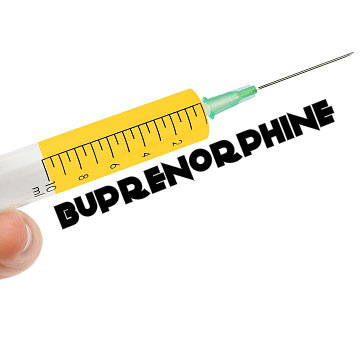 It might seem strange that a doctor would prescribe an opioid medication to help a person affected by opioid addiction; however, buprenorphine does not produce its effects as rapidly as heroin or other commonly abused opioids (or the opioid medication methadone); in addition, the medication has a relatively low maximum level of effect, and people who keep using it after reaching this level will not get any more “high.” In combination, these qualities make buprenorphine suitable as either a short-term or long-term option for people addicted to stronger opioids that enter treatment. Essentially, use of the medication makes it possible for recovering addicts to avoid uncontrolled substance intake while simultaneously avoiding the highly distressing symptoms of complete opioid withdrawal. One commonly used prescription product, called Subutex, contains only buprenorphine. Another commonly used product, called Suboxone, contains both buprenorphine and a second medication (naloxone) that effectively decreases the risks for buprenorphine abuse.
It might seem strange that a doctor would prescribe an opioid medication to help a person affected by opioid addiction; however, buprenorphine does not produce its effects as rapidly as heroin or other commonly abused opioids (or the opioid medication methadone); in addition, the medication has a relatively low maximum level of effect, and people who keep using it after reaching this level will not get any more “high.” In combination, these qualities make buprenorphine suitable as either a short-term or long-term option for people addicted to stronger opioids that enter treatment. Essentially, use of the medication makes it possible for recovering addicts to avoid uncontrolled substance intake while simultaneously avoiding the highly distressing symptoms of complete opioid withdrawal. One commonly used prescription product, called Subutex, contains only buprenorphine. Another commonly used product, called Suboxone, contains both buprenorphine and a second medication (naloxone) that effectively decreases the risks for buprenorphine abuse.
Effectiveness And Access Of Buprenorphine
Numerous studies have verified the effectiveness of buprenorphine and buprenorphine/naloxone as treatments for opioid addiction and opioid dependence (a state of physical reliance that does not include the dysfunctional symptoms of addiction). In addition, unlike methadone, which can only be administered to patients in a fairly small number of sanctioned clinics, any doctor who obtains a mandated ID number from the U.S. Drug Enforcement Agency can prescribe buprenorphine and buprenorphine/naloxone. This means that, theoretically, people affected by opioid addiction can get buprenorphine-based treatment in a far greater number of locations than they can gain access to methadone. Thousands of doctors across the U.S. have gone through the training needed to properly prescribe buprenorphine and buprenorphine/naloxone and have also registered with the DEA.
Awareness Among IV Opioid Users
In the study published in Substance Abuse, researchers from Johns Hopkins University, the City University of New York, the Albert Einstein College of Medicine, the Montefiore Medical Center and New York Harm Reduction Educators used an examination of 158 IV opioid users in New York City to assess how many such users know about buprenorphine as a treatment option for opioid addiction. All of these users were participants in a syringe exchange program. In addition to gauging basic awareness among these individuals, the researchers used interviews to determine how many people had received some form of buprenorphine and how many people displayed a willingness to try the medication or learn more about it. The researchers also looked for any connection between established familiarity with buprenorphine and the willingness to use the medication.
All told, the researchers found that most of the study participants (70 percent) had heard about buprenorphine as a possible treatment option. Roughly one-third of the participants (32 percent) had first-hand knowledge of someone who took buprenorphine, while another third (31 percent) had second-hand knowledge of someone who took the medication. Only 12 percent of all the individuals enrolled in the study had received buprenorphine themselves. When the researchers asked the 138 participants with no personal history of buprenorphine use if they were curious about using the medication, more than half of these individuals (57 percent) replied in the affirmative. Upon further investigation, the researchers concluded that curiosity about buprenorphine use was basically limited to those participants with second-hand knowledge of the medication.
The authors of the study published in Substance Abuse note that the opioid users enrolled in their project were among those that may be overlooked by programs offering treatment for opioid addiction. Even still, most of these individuals knew about the medication and many showed a willingness to learn more about it or possibly use it as a treatment option. The study’s authors believe that public health officials should explore the interest shown by those IV opioid users with second-hand knowledge of buprenorphine as a potential inroad for eventually making active treatment with the medication more widespread.
Read More About Successful Buprenorphine/Naloxone Treatment For Opioid Addiction


